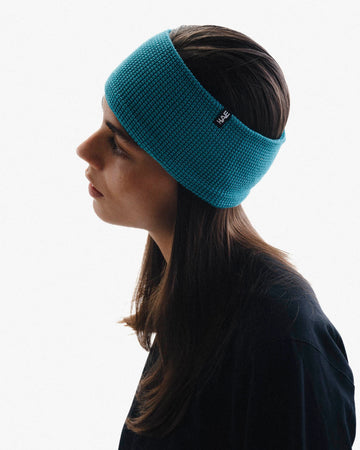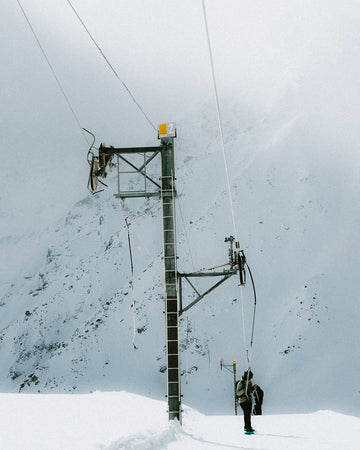The 1970s marked a turning point for the outdoor lifestyle in Switzerland. While the Alps had always been deeply rooted in Swiss culture, this was a time when a wider population discovered the mountains as a place of adventure, freedom and sport. Winter sports, especially skiing, experienced a real boom. New ski resorts were created, ski lifts and cable cars made the peaks accessible to everyone. People flocked to the mountains, not just to go on holiday, but to experience nature in all its splendour. It was the birth of a new attitude to life - the Alps as a place where you could find freedom and community at the same time.
In the midst of this boom, a simple but meaningful accessory emerged: a legendary hat from the Schweizerische Kreditanstalt ( SKA ) . Originally issued as a promotional gift by a Swiss bank, it quickly found its way onto the ski slopes and into mountain huts. The red and white colors not only symbolized Swiss identity, but became an emblem of the blossoming outdoor culture. The beanie became more than just a fashion accessory - it embodied the freedom and spirit of adventure that so many people sought in the Alps.
Adventure and functionality in focus
The legendary beanie, originally a promotional gift from a Swiss bank, quickly became a popular accessory - simple, functional and perfect for alpine conditions. It stood out, not because of its striking design, but because of its presence on the heads of skiers, hikers and mountaineers.
The beanie became a symbol of the new outdoor lifestyle that celebrated freedom, adventure and community in the mountains. With its simplicity and practicality, it caught the attention of those rediscovering the Alps - and it remained in people's minds as a timeless companion.
Cultural Identity and the Colors of the SKA
The beanie was distributed by the Swiss Credit Institute (SKA) and was in the colors red, white and blue, which originally represented the bank. But it quickly became much more than just a promotional gift. Its simplicity and functionality made it a symbol of the outdoor lifestyle that so many people discovered for themselves at that time.
The beanie reflected the essence of “Swissness”: functionality, simplicity and a deep connection with the mountains. It not only stood for fashion, but became part of an identity that celebrated freedom in nature and pride in one’s own origins.
The Change of Youth and the Rise of Recreational Sports
During this period, youth in Switzerland were experiencing a change. Young people were looking for new ways to express themselves and to break away from traditional values. Outdoor sports, especially skiing and mountaineering, offered a perfect opportunity to experience freedom and adventure in nature. Skiing, once an elite pastime, slowly evolved into a leisure activity for everyone - regardless of age or background.
This change was reflected in the rise of recreational sports, which drew more and more people to the mountains. The hat became a constant companion in the Alps - worn by young adventurers seeking a new sense of freedom, as well as by experienced mountain sports enthusiasts. Whether on the ski slopes or hiking trails, the beanie embodied the lightness and uncomplicated outdoor lifestyle that, for some, became the epitome of freedom and self-realization at that time.

The reinterpretation of the beanie by HAE
Today, almost half a century later, we at HAE are reviving the legendary beanie with a new interpretation. Our version, the CH41 1291 2006 1815 2402 7 Beanie , takes up the timeless design and values of the 1970s: functionality, simplicity, the spirit of freedom in the mountains.
With modern standards of quality and sustainability, we rely on high-quality materials and conscious production. Our beanie remains true to the original ideals - it is more than just a fashion accessory. It embodies the connection between past and present, between tradition and modern adventurous spirit. Just like back then, it is a companion for everyone who loves life outdoors in nature. And it is thought through down to the smallest detail. If you don't believe us: take a close look at the numbers in the product name.












